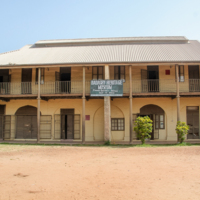3 results
Legacies on Display: Slavery in Museums
Museums are exciting places to see the usable past in action. They bring together objects, people and places to provide interpretation and facilitate discussions on a range of topics, from history to human rights. There is a global tradition of museums representing slavery beginning in the early twentieth century. These museums range from small, local community museums in the UK, that focus on individual abolitionist leaders, to redeveloped slave forts on the West African coast and large national institutions in North America. As well as providing visitors with information about slavery, both historic and modern, museums can also provide evidence as to how societies are thinking about these issues.
This collection showcases museums across the world that house permanent exhibitions relating to slavery and abolition.

Mobee Royal Family Orginal Slave Relics Museum
The Mobee Royal Family Original Slave Relics Museum is a small museum housed in a nineteenth century colonial building. It showcases the role of the local 'Chief Mobee' in the enslavement of local Africans during the transatlantic slave trade, as well as the role of his son (and successor) in…

Badagry Heritage Museum
The Badagry Heritage Museum is housed in the former district officer’s office that was constructed in 1863. The museum attempts to highlight the injustice and horror of the transatlantic slave trade, whilst also exhibiting the rich histories and cultures of Africa. There is a specific focus on the…

Old Residency Museum
The Old Residency Museum is housed in a colonial building, designed in Scotland and shipped to Nigeria during the 1880s. It previously housed the British colonial administration in Nigeria. The museum holds the largest collection of Nigerian documents and artefacts in the world. It focusses on the…